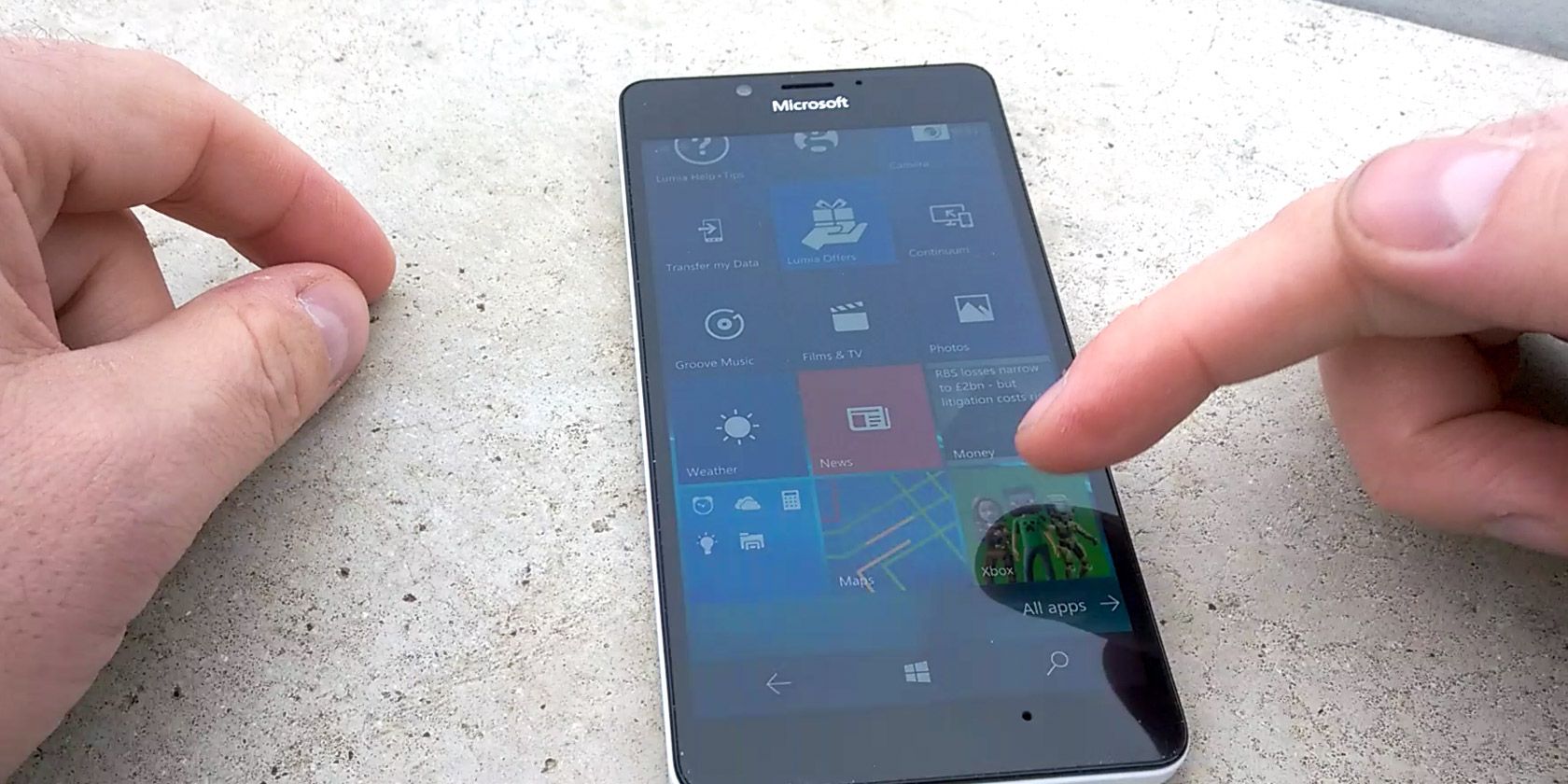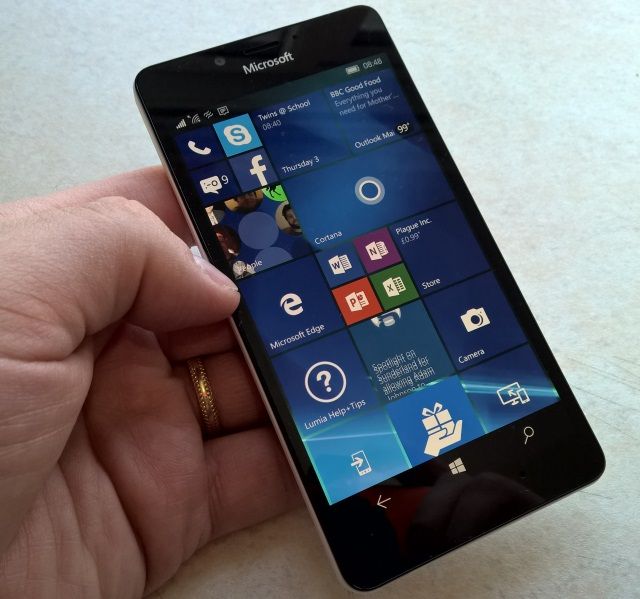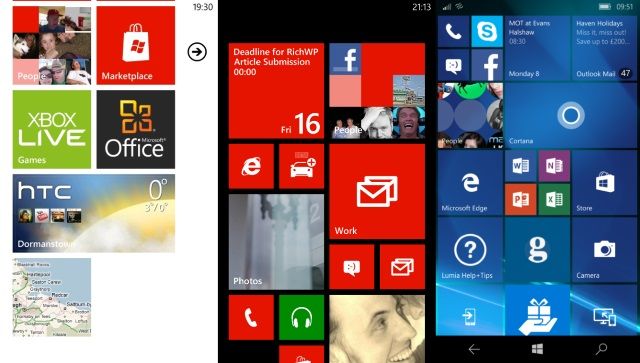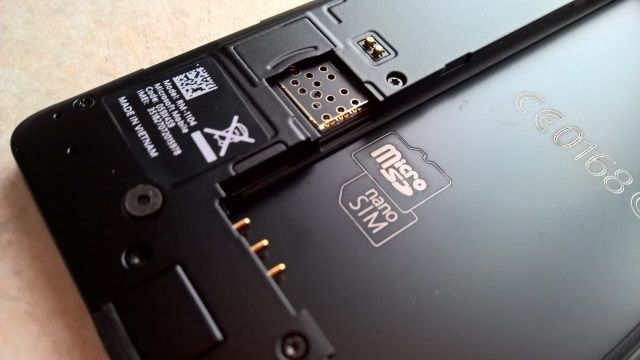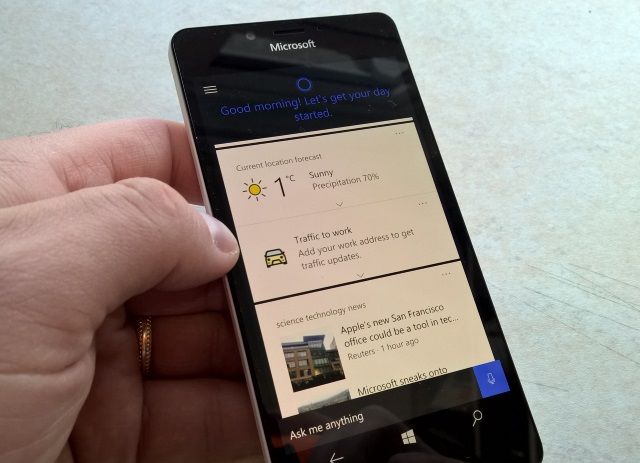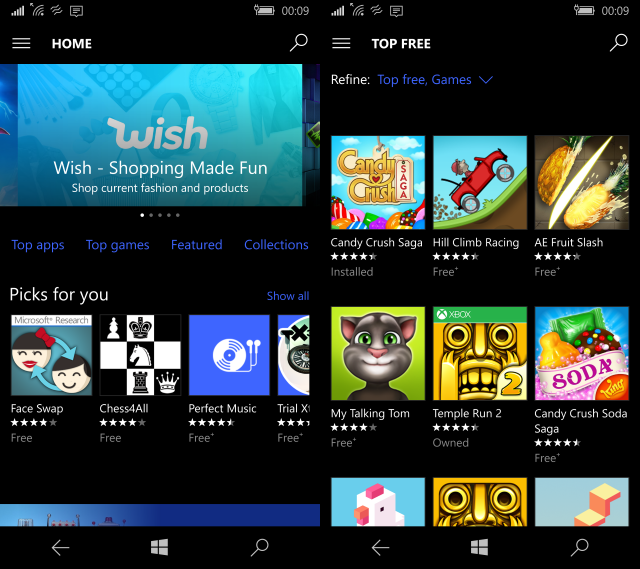Microsoft Lumia 950
This could be Microsoft's final flagship phone. With many declaring Windows 10 Mobile dead on arrival, pre-installed on a collection of smartphones that don't seem to be worth the money, just what is the point of the Lumia 950?
From Windows Mobile and Back Again
I acquired my first Windows Mobile device in 2003, and stuck with the platform through to 2013, save a brief dalliance with the infant Android in 2007. In particular, I've been a fan of the Windows Phone era, the tiles, the erstwhile "Metro" design language and the speed of the operating system.
But Windows 10 Mobile represents a bit of a change. It isn't just a mobile version of Windows 10 – it is Windows 10, shrunk down to be suited to a mobile device. This much can be seen with the Continuum feature, in which the Windows 10 Mobile device -- once connected to a keyboard, mouse and a special Microsoft dock (or Miracast device) -- becomes a Windows 10 computer.
The idea of having a full PC in your pocket is a nice one, but is it really where the industry is going? And does it have any genuine bearing on your interest in the Lumia 950?
First Impressions of the Lumia 950
As a Windows Phone adherent over the years, I've had a fair few devices, and quite a few Lumias. The 800, 820, 620, 640 and 920 have all passed through my hands; I retain a Lumia 930 as a spare phone and occasional digital video device. So I know what to expect from a top end Windows Phone/Windows 10 Mobile device.
Upon unpacking the Lumia 950, I discovered that the handset was a little lighter than my Sony Xperia Z5. The reason? It's got a plastic back cover. No unibody build in sight here, I'm afraid. But, we can look on the bright side. The phone is built for longevity if we consider that a new battery can be installed, and the ease with which the nano SIM and microSD cards can be inserted is refreshing in this age of secret trapdoors on the side of phones.
As for the operating system, things have evolved somewhat, but aesthetically I don't feel this is for the better.
While tiles can still be resized and repositioned based on your preference, the Start screen seems a whole lot busier than it ever did before. This may be due to the tightness of the tiles, which seem as though they are placed a little closer than on earlier versions.
However, there are plus points. The addition of a file manager, for instance, and the ability to reveal the nav bar (where the Back, Start and Search buttons can be found) simply by swiping up, are good.
And the 20 MP camera with Carl Zeiss optics and PureView image processing software is a massive advantage over many other phones.
What Do You Get with the Microsoft Lumia 950?
Occupying a physical space of 5.71 x 2.88 x 0.32 inches (145 x 73.2 x 8.2 mm) and weighing 5.29 oz (150 g), the plastic-bodied Lumia 950 (available in black or white) has a 5.2 inch AMOLED display with 1440 x 2560 pixels and a density of 565 ppi. Touchscreen is Corning Gorilla Glass 3's scratch resistant glass, and the front of the phone also offers a light sensor and a proximity sensor. There's also a 5 MP camera.
Inside is the Qualcomm Snapdragon 808 MSM8992, with a 64-bit Hexa-core, 1800 MHz, ARM Cortex-A57 CPU, with an Adreno 418 GPU. 3 GB RAM system memory is complemented with 32 GB of built in storage, and support for microSD cards up to 200 GB. The microSD card slot is beneath the removable back cover, along with the nano SIM and removable battery.
The 3,000 mAh battery offers 23 hours talk time, with 12 days' standby time and 18 hours talk time on 3G networks. Wireless charging is built in, and works with any Qi compatible pad. Note that the phone uses a USB 3.1 Type-C connector for charging.
Usual connectivity options can be found on the Microsoft Lumia 950, with Bluetooth 4.1 and dual band Wi-Fi. Wired and wireless tethering/hotspot are included, along with NFC, Miracast and cable and wireless syncing. Mobile Internet is available via 3G, LTE and EDGE.
On the back is the 20-megapixel camera, with its Tricolor LED flash. Focal length is 26mm, and aperture is F/1.9, and the software offers optical image stabilization, face detection, digital zoom, self-timer, autofocus, geo-tagging, and back-illuminated sensor (BSI). Exposure compensation, ISO control, and white balance presets are also included. Camcorder mode features optical image stabilization, continuous autofocus and video light, along with video calling and sharing.
Windows 10 Mobile: A Usable Operating System?
Afyer a month's use, I've come to the conclusion that there's something a little unsatisfactory about Windows 10 Mobile. Perhaps it's the knowledge that somewhere in this phone there is an actual Windows 10 PC screaming to be hooked up and used like a desktop… or perhaps it's just the fact that compared to Windows Phone 8.1 and its predecessors, Windows 10 Mobile is just a little bit... dull. It's also slow in places, but this is nothing to do with the phone -- rather this occurs whenever the device phones home. Whether you're connecting to OneDrive, or Xbox Live, or the Windows Store, everything slows down to the point that you're left hanging, even on the fastest wireless connections.
As I type this, I have the Lumia 950 test device alongside my Lumia 930. The test device is lighter, slimmer, has a better spec and slightly improved camera. It is, to all intents and purposes, a superior device. But Windows 10 Mobile is perhaps the dullest smartphone OS I've come across.
Quick rewind: I was there at the beginning for Windows Phone, back when it was little more than a jumped up feature phone. I stuck with it, I loved Windows Phone 8, and although I relegated my WP devices to secondary status when it became clear that Microsoft didn't love the platform as much as the users, I've continued to root for it.
I'm not sure I really know what Windows 10 Mobile is, but despite the strong user interface similarities, it just doesn't feel as fun as Windows Phone 8.1. Something is missing, and I'm not sure what it is.
The Achilles Heel: Apps and Games
It's clear that one benefit of Microsoft's merging of its desktop, gaming and mobile operating systems is that it should be easier for app developers to target all three platforms. The woes of Windows Phone in attracting app developers have been analyzed over and over, but boil down to a single truth: app and game developers don't seem that able to easily transfer their efforts from iOS and Android to Windows Phone.
So is Windows Mobile 10 any better?
Well, at the moment, no. This is not a platform that has any major launch titles, for instance, and nor does it really offer any hugely impressive features beyond Cortana, Continuum and Hello Windows (which uses facial recognition to unlock your device).
Sure, there are games out there, good titles too, many of which with Xbox Live integration. Some useful apps come pre-installed, meanwhile, and there's always a big name flirting with Windows Phone/Mobile (for instance, Slack are currently offering a very good app for the platform).
In my opinion, the "app issue" has been largely blown out of proportion. While it is clear that iOS and Android developers are avoiding Windows mobile devices, plenty of platform-only alternatives have been released over the years. The real app issue with Windows 10 Mobile's app store is the presence of "crapps" -- apps that offer very little other than a wrapped up web page, for instance, or games full of adverts.
How's the Camera?
As smartphone cameras go, the flagship Lumias have been blessed with Carl Zeiss lenses and PureView software since the Nokia days, meaning that what you have with the Lumia 950 is a good quality, sharp camera. Here's a comparison with its predecessor, the Nokia Lumia 930 (on the left):
However, while the camera UI has improved, the white balance and auto-focus problems remain. Put simply, the software ignores manual white balance and focus settings, with the result of sudden changes in color temperature and unexpected drops in focus. If these settings were on automatic, you might expect it, but for manual settings to be overridden by automatic ones is just frustrating.
This is a shame, as the quality is otherwise good, as you would expect from a Windows Phone with such a good quality stills and video camera.
A Solid, Usable Phone with an App Problem
All in all, the Lumia 950 is a solid successor to the line. The plastic case makes it lighter than its predecessor (the 930) and while this may not be hugely attractive as a design choice, it does at least offer the possibility of customizing the phone with alternative removable battery covers. Windows 10 Mobile may feel slightly less accessible than Windows Phone 8.1, but it does have the benefit of Continuum, which puts a PC in your pocket.
Apps are a problem full stop, but there is a strong chance that the unification of Microsoft's consumer platforms could put an end to this. The worry is that the Lumia brand might have had its plug pulled by the time that happens, possibly replaced with a Surface phone.
[recommend]Overall, the Microsoft Lumia 950 is a solid piece of hardware, with a friendly and, efficient Windows 10-style user interface. But ultimately, like a PC, it's designed for office productivity first, fun later.[/recommend]
Send your products to be reviewed. Contact James Bruce for further details.

